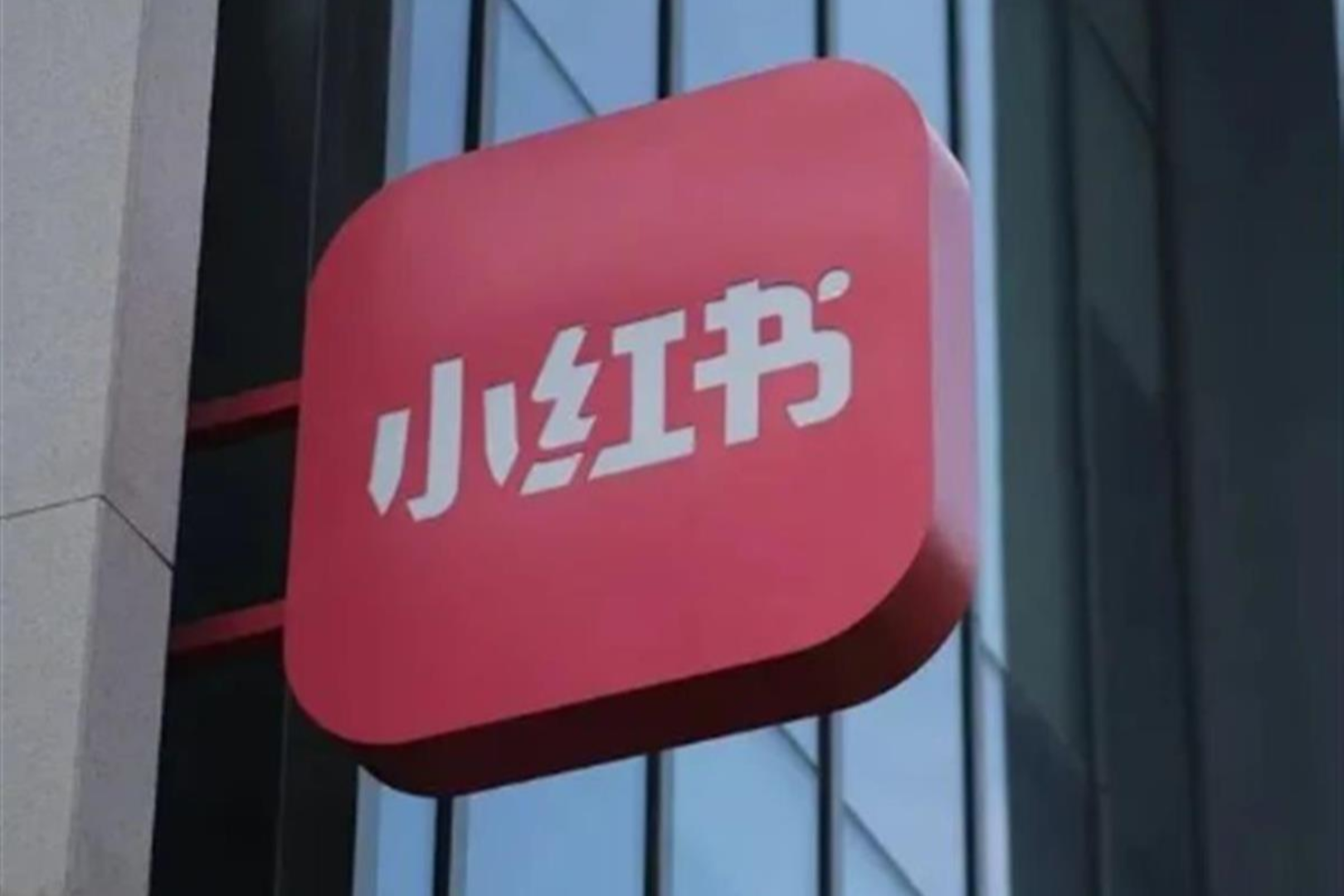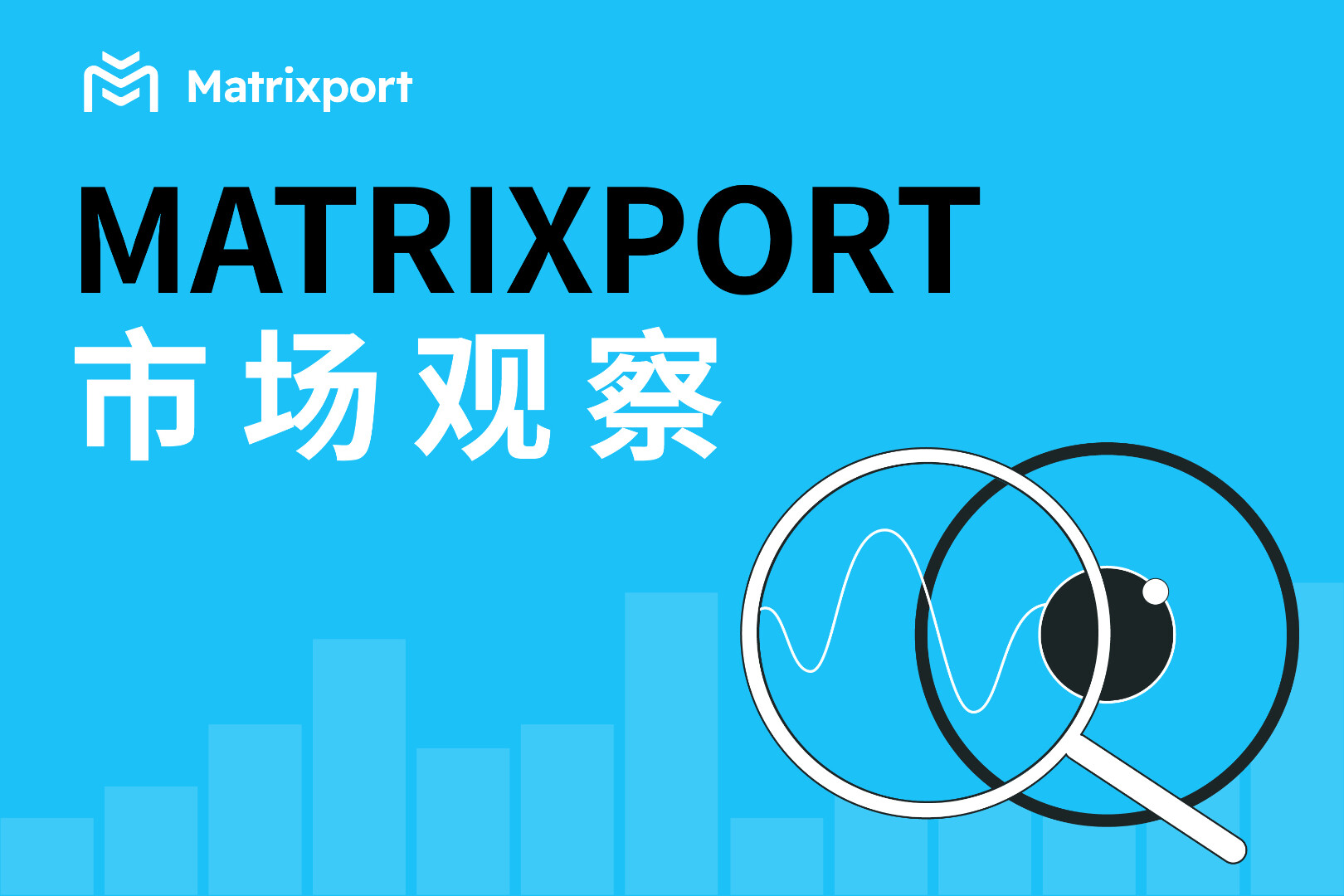Related Reading:Topic | Messari 2022 In-Depth Research Report on Encryption Industry
The original text is from Messari, the original title is "Crypto Theses for 2022", translator | W3.Hitchhiker
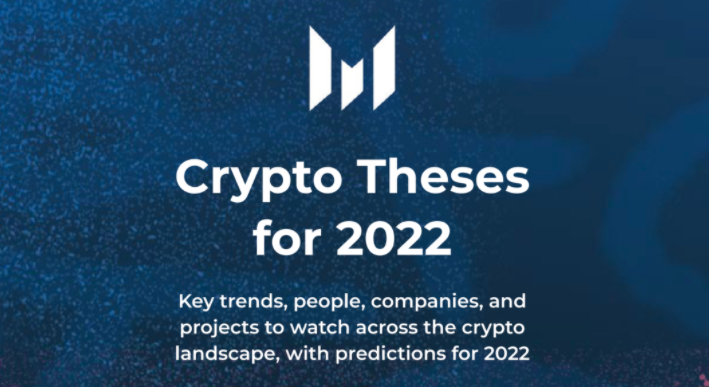
Related Reading:
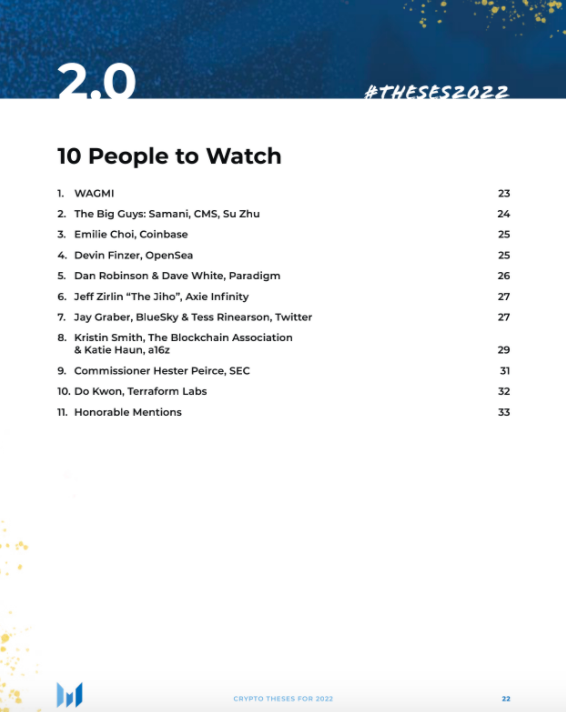
1.WAGMI
Topic | Messari 2022 In-Depth Research Report on Encryption Industry
textThe original text is from Messari, the original title is "Crypto Theses for 2022", translator | W3.Hitchhikerfirst level title
Chapter 2: 10 people worthy of attention
secondary title
"We're all going to make it" is my favorite cryptocurrency memo in years. It says "we're still early" but doesn't sound like an obnoxious early MLM handyman. This is a poke at the famous Balaji"
A memorable twist on ", which is also my personal favorite. And it embodies more mission alignment and altruism than another crypto twitter favorite, "Up Only." WAGMI embodies the cultural transformation of crypto, From the "fight the government and let's move to a new age" crowd to the "let's fix the future with better technology, aligned incentives, and other builders" crowd.
WAGMI has you covered, assuming you come to this report with an open mind. Welcome!
If you're still skeptical about cryptocurrencies, no big deal. Just don't be openly hostile and closed-minded about its potential. Vicious critics like Jamie Dimon are NGMI.
[Seriously, though, Dimon has been...consistent in his thinking about cryptocurrencies over the years, and has been consistently wrong. He called it a "terrible store of value" (2014), said it "won't survive", "will be stopped" (2015), has "nowhere to go" (2016), and is "a liar" (2017 2018), told an interviewer "I don't really care" about cryptocurrencies (2018). Then launched a JPMCoin pilot (2019), admitted it was "not my cup of tea" (2020), and then repeatedly expressed his disdain this fall, saying "I have no interest in it" and it's "fool's gold" and "worthless". Don't be like Jamie. He is NGMI. ]
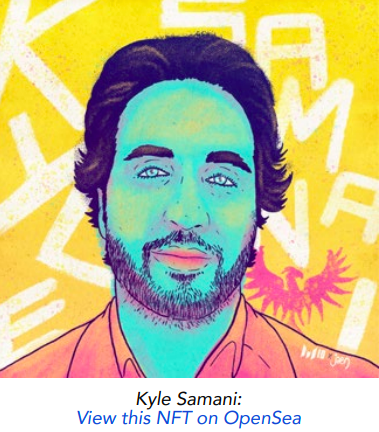
image description(I right saved this on twitter. It's not mine. But if you can find it, I'd like to quote it appropriately.)secondary title2. Big names: Samani, CMS, Su ZhuThis is a big year for these big guys.

Yes, many amazing technologies have been built, and yes, there are some amazing founders who deserve high praise (they are featured in this section and elsewhere in the wider report). But let's be frank, first off, it's been a big year for whales, especially the big investors who came out of the 2011 bear market intact. Riding through the bear market of 2018 and surviving into 2021 to achieve some of the biggest wins.Kyle Samani's Multicoin Capital has had a historic year -- a historic year by both crypto and venture capital standards -- with multiple $1 billion winners across different cryptocurrencies. The Graph, Helium, Arweave, Solana all reached $1 billion network status this year. And there are rumors that Multicoin broke $10 billion in assets under management in the process. Retail investors are watching the cryptocurrency boom, and no one is better positioned than Multicoin to secure seed funding. they passedpublic investment memorandum"Big talk," but I learned a lot from them, even in my。
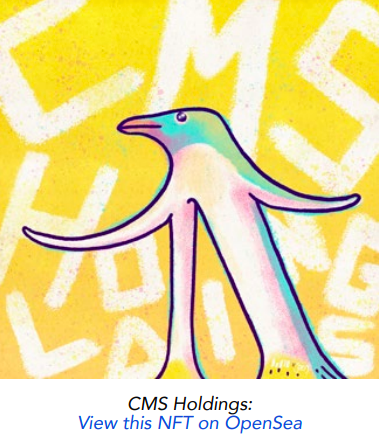
Wrong wayhot ball of moneytime (damn Zcash).On the other side of the world, another giant is on the rise, Su Zhu's Three Arrows Capital, which has become one of the largest funds in Asia and has one of their best-performing portfolios. They are also 2020Grayscale Trust dealOne of the biggest bettors in the world, for much of the year, has commanded double-digit premiums on massive net worth. Their stakes in Solana, Avalanche, and Polkadot have skyrocketed. Su Zhu without hesitationchanged his allegianceThen there's CMS Holdings. Nobody has more fun in the cryptocurrency space than penguins, and they tend to have a blast with everything. At the beginning of this year, CMS popularized the "’ memo. He sent one of our analysts the value$5,000 Girl Scout Cookies. He mercilessly ridicules bears and paper traders. he bought one
3.Emilie Choi, Coinbase

7 inch cube
. he
pay people to bring the damn thing from twitter to live debates. Rumor has it that heEven bid on a dinosaur(If true, this could be the only trade he misses this year). The CMS and team are also probably the fastest traders and/or the most responsive investors in crypto, which is a nice by-product of not having to manage other people's money. May you all be as happy in the new year as you are every day at CMS.I think one of the most remarkable things about Coinbase is that they have remained thriving despite a nearly total leadership change in recent years. Aside from Brian Armstrong, there are few earlier hires. Fred Ehrsam remains on the board, but his focus is on expanding venture fund Paradigm. Many other employees in the "Coinbase mafia" have gone on to start new companies or venture funds.
In my opinion, besides Brian, the two people most responsible for the company's continued success are former CTO Balaji Srinivasan (who helped steer the company in the right multi-asset strategy direction despite his short tenure, Because now 50% of Coinbase's revenue comes from trading pairs other than BTC and ETH) and Emilie Choi, her corporate development and M&A capabilities quickly made her the company's president and chief operating officer.NeutrinoThe background behind Coinbase VenturesAgaraquite eye-catchingZabo: With no full-time employees, Emilie brought the idea to Armstrong one day after birth and is now one of the most active investors in the cryptocurrency space. But it's the massive corporate acquisitions the company has made that are even more impressive. The company's acquisition of Earn.com is largely credited withSkew)。
$100 million price tag
4.Devin Finzer, OpenSea
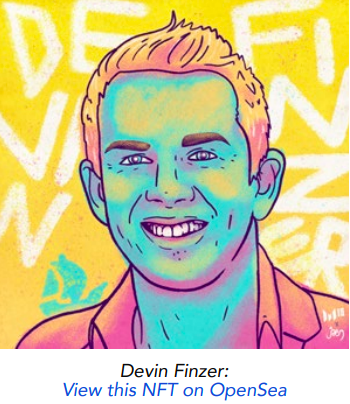
Acquired Balaji who served as CTO. But now Earn is done with $43 million in revenue (high margins) for the first nine months of the year. Bison Trails, which the company sees as a potential AWS-grade bet on managed blockchain infrastructure, is now working on a Coinbase Cloud offering. The company acquired Xapo for $55 million in 2019, snatching up Grayscale as a client and doubling Coinbase's custody assets. Managed annual revenue is now $120 million.(Machine learning for customer service) might upgrade the back office, but I expect bigger deals to open up new revenue streams like "Plaid for crypto" () or institutional data license (Nifty GatewayThe inorganic growth strategy is hardly unique to Coinbase. But the early victories under Emilie have been impressive. What startups should remember is that this is both an opportunity and a threat.InfinityAs the company's luckyhttps://techcrunch.com/2021/03/18/nft-marketplace-opensea-raises-23-million-from-early-investors(#humblebrag) and I can tell you that I have never seen a financial situation like OpenSea. The world's dominant NFT market is scrambling for cash despite the competition looming. Coinbase has 30,000 users on the waiting list for its upcoming NFT platform (which is OpenSea
Total number of historical users
four times that of ). FTX launched a Solana-based NFTs platform. Gemini already has. Other exchanges will almost certainly follow suit, launching their own products. Then, there are some open-source tokenization competitors likeand Fantastic, and based onAndre Cronje of FantomProject Artion.
Since I already know a small amount of private information, I won't guess what the next year will be like. But I will at least provide some thoughts on the company's current trajectory and the future of the NFT market in Chapter 6.
For now, suffice it to say how impressive OpenSea's expansion amidst the chaos is. Monthly exponential growth in the terminal market,In the case of soaring Ethereum gas, keep the website running normally. The NFT event planned by the company for its homepage has sparkedandAn unfortunate employee dispute. Announcements of new competitors were a distraction. Devin and the team moved on, seemingly unaffected.
5.Dan Robinson & Dave White, Paradigm
I think OpenSea will end up being a $100 billion company (or network) and their detractors underestimate their lead (I'm watching the same thing happen to Coinbase). It's hard for me to be an unbiased critic, but betting against a category leader with a great team has historically been a loser, and that's the profile of OpenSea.
(See Devin atMarchandOctoberTwo Bankless podcasts to learn about OpenSea's progress. Of course, you can also bid for the NFT in this report! )More investors? bring it on!Well, yes and no. Last year, I included Paradigm white hat hacker samczsun in our top ten list, and he went from
Hands save DeFi users, even if these breaches happen in
Uniswap v3automated market makerdirect competitorFloor Perps(samczsun is now atRICKs & MortysOn the Ethereum Foundation's bounty leaderboardPower Perpsat the top). He is not your typical GP.TWAMMGiven that Paradigm has been so prolific in conducting token economic research for some of the important financial elements in DeFi and NFTs, I would apply the same filter to Paradigm's nominations this year.Everlasting Optionsautomated market maker

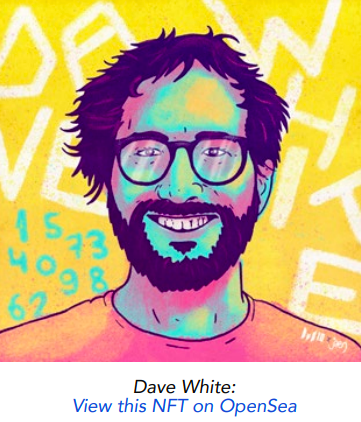
6.Jeff Zirlin “The Jiho”, Axie Infinity
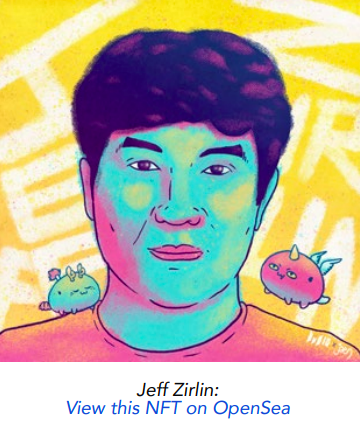
(which we discuss in depth in Chapter 7), largely spawned by Paradigm's Dan Robinson. such as
(composites that allow NFT holders to borrow and lend against assets) and
(NFT Fractional Primitives), which aims to solve the problem of insufficient liquidity in the NFT market.$RON(similar to liquidity risk for options, no exercise or expiration date required),Katana(large AMM orders spread over a period of time) and
(co-authored with FTX's Sam Bankman Fried) could bring larger and more sophisticated investors to the DeFi market. The latter six were written or co-written by Dave White, who joined in January. The Paradigm team's useful research results are actually pretty crazy. And that's just what we know so far. I look forward to seeing what they have in store for 2022.
7. Jay Graber, Bluesky & Tess Rinearson, Twitter
Over the past year, Jiho has rewritten the cryptocurrency community-building playbook. What is the task? Conquer the game world. Secret weapon? A Trojan Horse for the humble Pokemon-like NFT card game that will catapult Axie Infinity to the top of the crypto space.
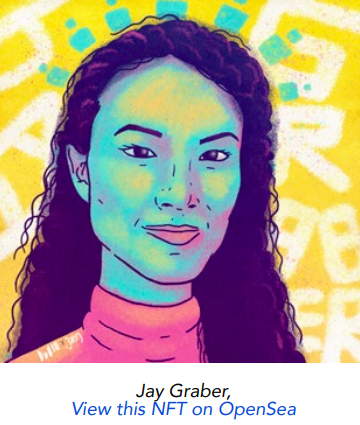
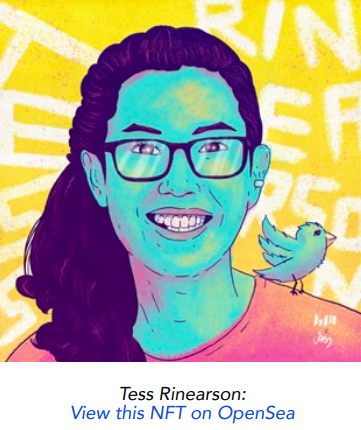
As Head of Growth and Community at Sky Mavis, the game studio behind Axie, Jeff discovered and cultivated a new, untapped audience for Axie's play and earn games — in the Philippines. Every day, thousands of people out there play Axie for fun and as a kind of income supplement. The Philippines now has 40% of the entire Axie user base, and Sky Mavis recently surpassed 1 million daily active users. Axie has little shortage of evangelists, as the native token AXS (whose design was spearheaded by Jeff) has returned 1250x over the past year, but some fans insist that Axie may end up being just one of the long-term games Jiho and team are playing footnote.
Axie Infinity itself is the launch mechanism for Sky Mavis’ Ronin Exchange, an Ethereum-pegged sidechain designed to facilitate cheap and gamer transactions. Since May, Ronin has generated $1 billion in revenue, holds over $9 billion in assets, and is the second largest blockchain by NFT secondary sales. Sky Mavis, one of the fastest growing game studios in history, recently secured a $152 million Series B round led by a16z. The company launched its token this fall (
). They're now ready to launch a brand new studio of web3-ready games and apps to hungry (and rich) fans.
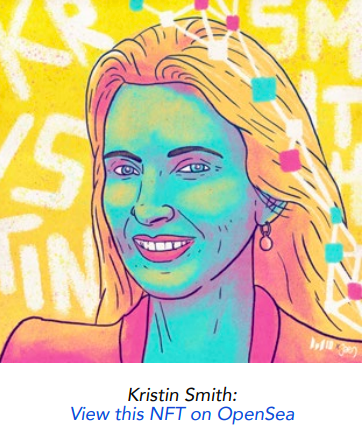
The success of Axie has made sense of an entire new genre (crypto games) and sub-genre (play and earn games), with roughly $1.4 billion pouring into related NFT projects in Q3 alone. At the same time, Ronin has become one of the case studies in the modular expansion of cryptocurrencies. Not bad for a product masquerading as a furry cartoon card game.
If ever a major tech company disrupted itself in a meaningful way with Web3 technology, it would likely be a low-monetization, founder-led social media company with the most thoughtful cryptocurrency supporters. Founder-led social media company with the most thoughtful cryptocurrency supporters. Of course, I am referring to Meta. (Curveball!)
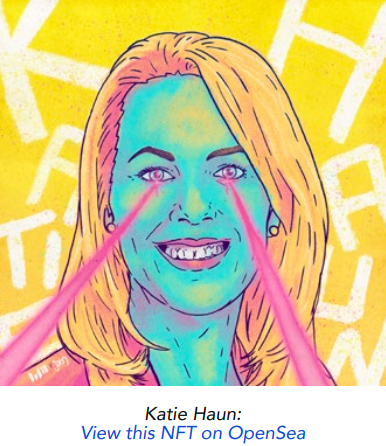
When I started writing this section, I was expecting a 30-minute recap and quick notes on Jay Graber's Bluesky plans to take over Twitter this summer. "Jay decentralizes twitter" and the mockingjay avatar were my placeholders and starting biases. When I started to actually investigate Bluesky, I found something different. So far there has been relatively little activity within the Bluesky "community" (compare their Github/Gitlab to Diem's!), which makes me wonder if Twitter is really trying to subvert itself and unlock its user data honeypot. Jay is awesome, but is Bluesky real, or a shallow sandbox?
Perhaps a "full-stack decentralized media" play isn't an appropriate fit for Twitter's near-term end-goal given the current throughput constraints of cryptocurrencies. It may be premature to have such expectations for an early-stage project like Bluesky. Instead, the project seems to be focusing first and foremost on connecting data between other decentralized platforms such as Mastodon, IPFS, Audius, and others.
8- kristin-smith-association and katie-haun of Blockchain Association, a16z
8. Kristin Smith Associates and Katie Haun, Blockchain Association, a16z
There's a reason I've included an informative policy section on this year's calendar. With three years left in the Biden administration, and having successfully passed the $1.2 trillion infrastructure bill (and its disastrous cryptocurrency provisions), there is a lot of pressure on policy leaders in our industry. It's no small task either, as their ranks are so small at the moment.
The problem with alliances, though, is that it takes time and effort to manage the different personalities. For example, BA counts Ripple as a member, which is a headache. It added Binance US as a member in 2020, much to the displeasure of Coinbase. The latter dropped support and has since chosen to push its own policy agenda, backing another group, the Cryptocurrency Innovation Council, in partnership with Ribbit, Square, Paradigm and others. However, last I heard, CCI has not yet hired an executive director. So the league still has many months of infrastructure building to do before it can come close to being on par with SARFT.
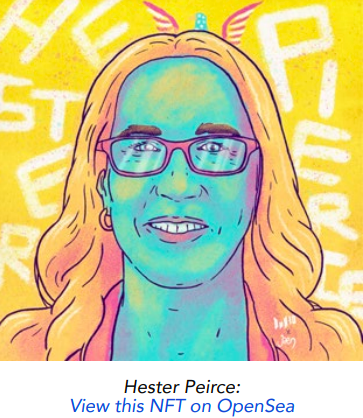
Hester Peirce:View this NFT on OpenSea
This brings us to Katia Haun and the policy team she has assembled at a16z. The former federal prosecutor, Coinbase board member, and now general partner of a16z's sprawling cryptocurrency fund, has recruited a former Hillary Clinton and Biden adviser, a former Treasury Department cryptocurrency expert, and U.S. Securities and Exchange Commission. Former commissioner of the Exchange Commission (SEC) and the Commodity Trading Commission (CFTC).
a16z has a hugely influential mouthpiece and their policy work has been quick so far. Their recently published web3 policy hub provides policymakers with great starting material, most notably a deck setting out why cryptocurrencies should be a policy priority for lawmakers. What specific legislative proposals (and working language!) could form the backbone of new cryptocurrency laws, address core policy issues without undermining the industry, and how workers can be educated and catch up on cryptocurrency.
We need unity and speed right now and the approach of BA and A16z gives us a good 1–2 punch going into the new year.
9-Hester-Peirce Commissioner, sec
9. Commissioner Hester Peirce, SEC
image description
"Mother of Crypto" might be a nickname that fits Peirce during Jay Clayton's presidency. These days, she's more of a commander of the Encrypted Night's Watch.
During the Clayton era, the SEC was hardly a model of pro-growth cryptocurrency policy, but at least the commission refrained from aggressively pursuing harmful, systemic over-regulation of a market they didn’t yet understand. Today, winter is upon us, and Peirce is the last line of defense against the soulless, anti-melanin white walker — Chairman Gensler. His mission in life is to be Secretary of the Treasury, and do whatever it takes, even if it means undercutting a fledgling industry and setting American tech back a decade. (I'm still just warming up. More on that in Chapter 4).
Peirce criticized the SEC’s enforcement action against Poloniex for its lack of clarity. Since 2018, she has been a dissenting voice in favor of spot cryptocurrency ETFs. She is outspoken about improving investment opportunities for non-millionaires, recognizing that the private market is where all the growth in the U.S. market has been over the years. She does this while upholding the SEC's investor protection mandate, advocating for the modernization of reporting rules, and regulatory "beach" (with safeguards) vs. regulatory sandbox (treating adults as children) .
Peirce's voice has been a welcome source of self-awareness, competence and restraint from Washington, DC. It's the voice of someone who's done her homework, and she's working hard to find solutions, not constraints. against anything new and useful. Pierce:
"When confronted with new technologies, new products and new ways of doing things, the tendency of regulators is to say 'no' instead of 'yes', to say 'stop' instead of 'go', to see dangers rather than possibilities... .The SEC is focused on investor protection, particularly retail investor protection, and the integrity of the market ... [but] investor opportunity is also important. And by investor opportunity, I mean Refers to the opportunity for investors to try new products and services, include new types of assets in their portfolios, use the latest technology, get into the ground floor of new opportunities, experiment and learn from the success and failure of investments and experience...Investors Want to be protected from fraud and have easy access to robust disclosures, but they also want to be able to use the latest technology to interact with their financial firms. But they also want to be able to use the latest technology to interact with their financial firms , to have access to a comprehensive range of investment options and to take control of their financial future by using their hard-earned cash as they see fit. Investors may sometimes be willing to take more risk than regulators deem prudent. A healthy regulatory response Will resist the urge to overturn investor decisions, and instead engage and educate investors using the same technology they are investing in."
Yes, more of this please!
Cryptocurrency investors take note and appreciate thoughtful policies. Cryptocurrency entrepreneurs have also taken notice. Cryptocurrency lawyers love it when policy leaders come up with viable legal solutions.
We hope there are more of these!
10. Do Kwon,On "registration-only" enforcement actions: "Registration violations, even in isolation, are serious and our enforcement actions can serve to deter such violations and protect harmed investors. However, we should strive to avoid Enforcement actions and sanctions because they cripple innovation and stifle the economic growth it generates... Entrepreneurs may be forced to choose between some unpleasant options: spending their limited funds on expensive legal advice and compliance, or forgoing the pursuit of innovation for fear of becoming the target of law enforcement action. Regulatory safe harbors can resolve this unpleasant dilemma.”
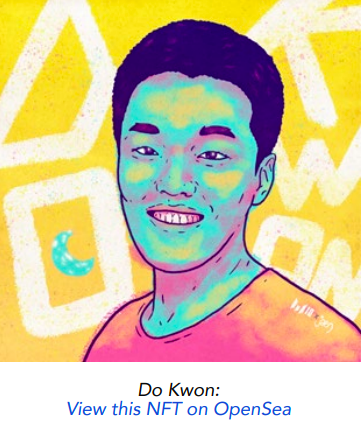
Do Kwon:View this NFT on OpenSea
Like this again!
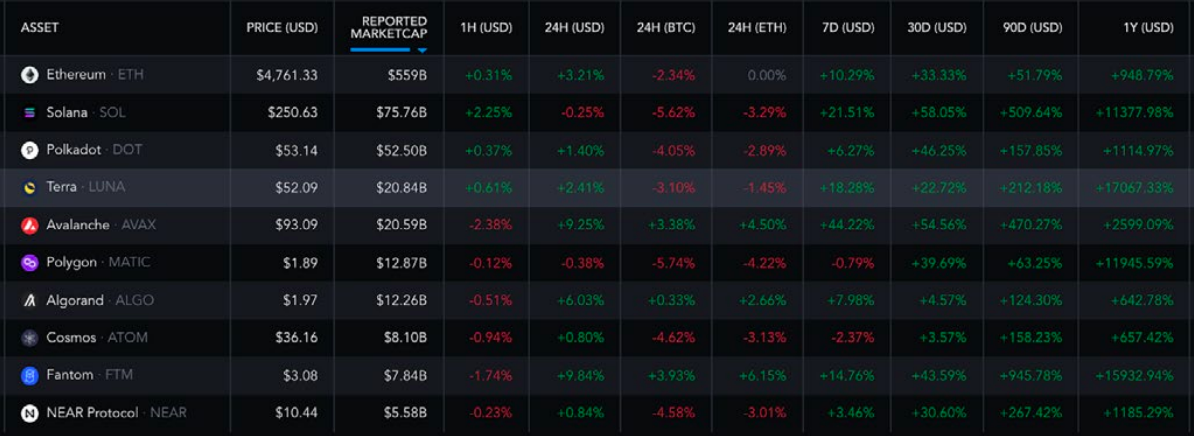
On paternalism: "We're not a merit watchdog, so we shouldn't be in business deciding whether one thing is good or bad. Investors think about their entire portfolio, while sometimes we think about a product itself once." Sexuality. We forget that people are building portfolios."
Most cryptocurrency professionals welcome thoughtful regulation, as long as we believe it will be applied fairly and consistently, it is technically feasible, and it is not unconstitutional. Peirce began to win over open-minded policymakers because her positions were clear, consistent, and solution-oriented rather than jurisdiction-oriented. We want and need her to defend the wall.
image description
It is worth mentioning that:
While writing this section (November 8th), I knew I wanted to highlight this year's "fast horses" in the highly competitive "Layer 1" competition. It's no surprise that Ethereum has rebounded nearly 10x over the course of the year, but the real story in 2021 is Ethereum's blockspace congestion, high fees, and subsequent explosion of Layer 1 competitors. The outbreak of its first-tier competitors. Avalanche grew 25 times year-on-year, Solana and Polygon 110 times, and Fantom 160 times. However, Terra was the winner with a staggering 170x return.

